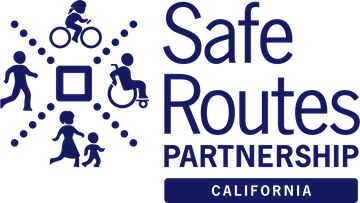

It’s been a busy fall for the agencies administering the grant programs funded through cap-and-trade (Greenhouse Gas Reduction Fundor GGRF for short). Awards have been announced for the Affordable Housing Sustainable Communities (AHSC) program and Guidelines posted for the Urban Greening (UG) and Transformational Climate Communities (TCC) programs. ATP also received $10 million this year from GGRF and that amount was included in the ATP Cycle 3 statewide award recommendations. Below are the latest updates since our October post.
Affordable Housing Sustainable Communities: In October, the Strategic Growth Council awarded $290 million to 25 projects around the state. The majority of funding will go to affordable housing projects (80%), but about one-fifth ($55 million) will go to “sustainable transportation” infrastructure and amenities, 87% of which will be spent on infrastructure improvements. This is a significant change from the last round of funding, where most of the funding went to amenities like bike racks. This was the result of a change in the guidelines between the first and second cycles that distinguished between infrastructure and amenities. This week, SGC finally released the full data on these projects, including spreadsheets on the transportation, programmatic and co-benefit components. From our analysis of the data we found that, collectively, the AHSC projects will create:
- 18.53 new miles of bike lanes
- 55,024 new linear feet of pedestrian paths (43,104 is sidewalk; 11,522 is trail)
- 154 improved crossings
- 7 bus shelters
- 36 bus benches (32 at one project)
- 40 bicycle parking spaces (at 2 projects)
- 22 transit routes improved (mostly added service)
In terms of programmatic elements:
- 9 of the 25 projects included an active transportation infrastructure component. Mostly funding for a bike share station or passes to the bike share system.
- 5 of the 25 projects included an outreach/education component. These were mostly for bike safety education, or the Go Human safety & encouragement campaign that SCAG is running in Southern California to encourage people to walk and bike.
- 9 of the 25 project included a transit ridership component. These were transit passes in most cases.
In terms of co-benefits:
- 16 of the 25 projects listed a Public Health & Safety co-benefit as their #1 choice. 9 of the 25 chose an economic co-benefit for #1 and none chose an environmental benefit. The most popular public health co-benefit was “reduce health harms due to air pollutants followed closely behind by “increase access to parks, open space & other community assets.”
- For their #2 choice, however, Economic came out on top with 16. Public Health had 7 and Environmental had 2. The number one choice was “reduce housing costs” followed closely behind by “reduce transportation costs & access to public transportation” and “create quality jobs & increase family income.”
- For the #3 choice, only one chose a public health benefit. 21 chose an economic co-benefit, one an environmental co-benefit and two chose no third co-benefit at all. The number one choice was “reduce energy costs” followed by “reduce transportation costs & access to public transportation”
Additional information on the projects is available here. We are also working with our partners in the Sustainable Communities for All Coalition to develop recommendations for the next round of funding, which is expected to be announced in the spring. SGC is holding listening sessions this month (dates here) where we will be weighing in on the grants awarded in the previous two round.
Urban Greening: The California Natural Resources Agency released draft guidelines for this new program in October, and comments were due December 6. The Guidelines make active transportation projects, including trails, eligible for funding. They also support the greening of schoolyards and parks. We submitted comments (view them here) focused on the following:
- Improve Active Transportation VMT Reduction by Combining it with Community Acquisition of Green Space in Accordance with SB 859
- Promote Further Reduction in VMT by Encouraging Active Transportation Projects to Align with Broader Plans and Programs
- Further Prioritize Low-income Communities Lacking Active Transportation Infrastructure and/or Planning Efforts
- Provide More Clarity on Scoring, Especially for Trails, Greenways and Bicycling Projects:
- Ensure Protection of Disadvantaged Residents by Implementing Anti-Displacement Measures
The Call for Projects is expected to be released in early 2017 and we will publicize the funding opportunity to our network once it is available.
Transformational Climate Communities: Finally, the draft guidelines for this new funding program have been released. In our last post we mentioned that the SGC recommended awarding these funds ($140 million total) to just three cities in California: Fresno (50%), Los Angeles (25%) and a to-be-determined third location (25%). The SGC officially approved this funding allocation at its December 6 meeting and will announce the third location shortly. The guidelines encourage collaborative approaches to a variety of issues affecting these communities, including transportation, housing and water. Nonprofits are eligible to apply and joint applications with multiple agencies and partners are strongly encouraged. Priority will be given to proposals that prioritize focused implementation of:
- Specific plans for multi-modal hubs that prioritize district-scale and regional transit and active transportation connectivity to employment and service centers.
- Well-integrated plans that coordinate housing, multi-modal transportation connectivity, renewable energy generation, water efficiency, storm water management and other urban greening improvements;
- Physical and programmatic connectivity to low-income and disadvantaged residents to improve access to jobs; workforce development and economic opportunity for low-income and disadvantaged residents; and integration of affordability and equitable access to infrastructure and supportive services for low-income and disadvantaged residents.
Comments are due in early January and the Call for Projects should be released sometime in the spring.


